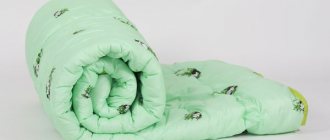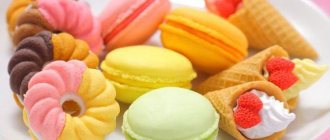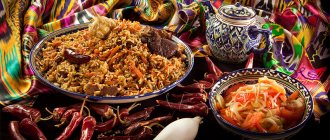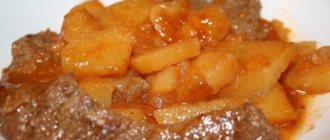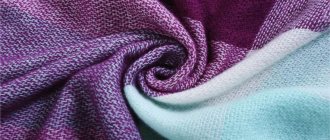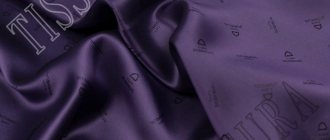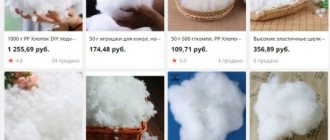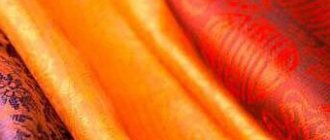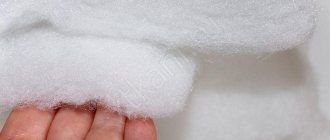Previously, all pillows were of three types: down, down-feather, feather. The softest and most airy were down ones; for those who liked something harder, the second option was ideal, but in government agencies they preferred the third. Today, the choice of this bedding is much wider, which is only the case with bamboo pillows, which recently appeared on sale.
Bamboo pillows are not at all stuffed with pieces of this plant; on the contrary, they are soft, light and voluminous, and the bamboo itself resembles cotton wool or padding polyester in structure. Covers, traditionally called naperniki, are usually sewn from bamboo or cotton fabric. Since the filler does not have the sharp tips characteristic of feather products, any fabric can be used for covers without restrictions. More pros and cons of bamboo litter are described below.
What are bamboo pillows made from?
The filler is made from cellulose, which in turn is made from the core of young bamboo shoots (up to four years old). It grows well without requiring special care or soil fertilization, so products made from it are considered environmentally friendly.
Bamboo cellulose fiber is snow-white, thin and very durable. There are two methods of its production:
- Mechanical is a labor-intensive and low-productivity process in which bamboo stems are crushed to obtain a fibrous mass. Then threads up to 25 cm long are pulled from it. The fiber obtained in this way is called bamboo flax. Products made from it are expensive.
- Chemical is a popular and cheap method in which the plant is crushed and treated with chemicals until a sticky mass is obtained. It is passed through small holes in a metal plate and left in an acidic environment until it hardens. The fiber is then processed to remove acids and alkalis. They are easily removed with water, the resulting raw materials are not dyed or bleached and are considered natural. Chemically produced products are called bamboo viscose.
How to make bamboo pillows
Most bedding products on the market are made from chemically produced bamboo fiber.
Photo: Bamboo fiber filling in pillows
What's inside
: Products that sellers call "bamboo" are usually not made entirely of bamboo. Manufacturers mix natural and synthetic materials (for example, in a 1:1 ratio) or fill a bamboo case with synthetics: polyester, polyester, artificial swan down. Therefore, before purchasing, you should carefully study the information on the label.
Characteristic
The popularity of bamboo is growing every day due to the beneficial properties of this filler. The fibers obtained from the stems of the plant differ
- softness;
- silky structure;
- elasticity;
- strength;
- long service life;
- the ability to quickly restore shape;
- hypoallergenic (if produced mechanically);
- breathability;
- hygroscopicity;
- thermal insulation properties;
- low maintenance requirements.
What attracts buyers is the inability of the material to absorb unpleasant odors, which is especially important when choosing bedding for children.
Pros and cons of bamboo pillows
Bamboo pillows have their advantages:
- Do not cause allergies.
- Does not absorb odors and dust.
- They have antiseptic properties - they do not harbor microorganisms or dust mites.
- They allow air to pass through due to their porous structure, which allows you to maintain an optimal microclimate.
- Easy to care for - machine washable along with the cover.
- Environmentally friendly - the fiber is clean and harmless to humans.
- They weigh little.
- They have an elastic and soft shape.
Manufacturers of bamboo products sometimes attribute wonderful properties to them: rejuvenating, cleansing, relieving stress. But there is no scientific evidence of these characteristics.
Photo: Bamboo sleeping pillowsAmong the disadvantages are:
- creasing - it is necessary to periodically beat to return the shape;
- hygroscopicity – absorbs moisture in rooms with high humidity levels or when there is heavy sweating during sleep;
- fragility - average service life is 2-3 years.
Product care requirements
The pillow with bamboo filling is machine washable.
Products with bamboo filling are not picky to care for, but there are still several rules that you can follow to extend the life of your favorite pillow.
- Bamboo pillows should be washed at least twice a year. Washing can be done either manually or in a washing machine. In any case, a high-quality product will retain its unique properties even after repeated washing. The water temperature should not exceed 40°C. When washing in a machine, use the delicate cycle and liquid detergent.
- The use of bleaches is not allowed.
- To thoroughly rinse the product, you should run the rinse cycle several times in a row.
- Spinning is carried out at low speed.
- It is better to dry the product on a horizontal, flat surface, sometimes turning it from one side to the other. Avoid direct exposure to ultraviolet rays.
- The dry pillow should be thoroughly beaten.
- Under no circumstances should the product be ironed. Under the influence of high temperatures, bamboo fibers will stick together, lumps will form, and the item will be damaged.
Important! Before the next use, the pillow should be fluffed and sometimes ventilated in fresh air to enrich the fibers with oxygen.
Bamboo fibers do not withstand the effects of chemical reagents, so products with this filler should not be dry cleaned. It is recommended to store products loosely spread.
By properly caring for your bamboo pillow, you can enjoy sound and comfortable sleep on it for several years.
Which pillow is better: bamboo or swan's down?
In the production of textiles, a synthetic analogue of swan down is used, since birds cannot provide so much raw material. In addition, natural components cause allergies and over time become a habitat for various microorganisms.
Artificial swan down
retains the properties of its natural analogue, but is safer. Pillows made from it are soft, light, warm and durable, hypoallergenic.
Bamboo pillows
, in comparison with swan ones, are denser, better support the neck and allow air to pass through. They are pleasant to the touch and give a feeling of coolness in extreme heat. However, their cost (if it is a truly high-quality product) is slightly higher than that of products made from artificial swan down.
It is difficult to definitively answer which of the two pillows is better. Comparing your preferences and health status with the characteristics of a particular filler will allow you to make the right choice.{banner_serefs}
Medicinal properties - truth or myth
You can often hear from sellers of bamboo pillows that they:
- treat allergies;
- improve skin condition;
- normalize blood circulation;
- remove toxins;
- kill viruses.
It is impossible to find reliable information confirmed by clinical studies on any point. Such statements are, rather, an advertising ploy.
If you regularly sleep on a comfortable pillow, your skin condition will really improve, but not from the magical properties of bamboo, but from sleep. And allergic reactions will disappear after replacing the down pillow with a new one.
How to choose a bamboo pillow
When choosing a bamboo fiber pillow, you should pay attention to the following points:
- The composition of the filler – bamboo should be 50% or more.
- Information about the manufacturer - name, address, telephone. Due to the popularity of this material, fakes are common on the market.
- The quality of the seams - they must be smooth and continuous.
- Ease of inhalation through the pillow - bamboo allows air to pass through well. This property can be grasped if compared with a product made from another material.
- Quality of the cover - a cheap synthetic bedspread is unlikely to be filled with natural fiber.
Photo: Bamboo Village Grass pillow
Choice
The main models of bamboo pillows in the photo demonstrate the variety that product manufacturers offer. Various sizes, cover colors, shapes. All these are secondary signs; the main thing is to choose a product of high quality in its composition.
- Chair pillow - orthopedic pillows, basic models and care for them (129 photos)
Headrest pillow - how to sew it yourself. 140 photos of models for children and adults
- Double bed linen - main sizes, patterns and stylish colors (120 photo ideas)
Labels provide information about the type of fiber processing, as well as the material from which the cover is made.
The product must be of the correct shape, without external signs of poor quality cutting and tailoring.
When crushed by hand, the pillow should quickly return to its original volume and appearance.
The size must be selected individually, taking into account the characteristics of night sleep and body structure. In this case, the main thing is convenience.
The correct choice of a quality pillow will guarantee a restful sleep and comfortable use for the entire shelf life.
How much does a bamboo pillow cost 70x70, 50x70
The price range is quite wide: from economy to premium. The cost of the product depends on the size, composition of the cover and filling, manufacturer’s brand, design:
- the price for a pillow measuring 50x70, called “Bamboo,” starts from 300 rubles. However, if you look at the composition, it turns out that the filler is holofiber, the cover material is polyester;
- for 600 rubles you can buy a product whose cover contains bamboo fiber and a synthetic filler.
The cost of a high-quality pillow with bamboo fiber filling and a cotton cover starts from 1,000 rubles and reaches 3,000 rubles, depending on the manufacturer.
For bedding in a more expensive price category (more than 5,000 rubles), expensive fabrics are used. For example, the outer side of the bedsteads is sewn from jacquard.
Pillows measuring 70x70 with the same quality characteristics will cost: the economy version is 150-200 rubles more, the middle price segment and premium are 500-1100 rubles more expensive.
Material for production
Not so long ago, a new product appeared on the domestic market - bamboo sleeping pillows. They are made from environmentally friendly material and are much safer than previous generation bedding made from down and feathers.
The bamboo fiber used to fill the pillows has a soft, airy structure, reminiscent of padding polyester or cotton wool in appearance and tactile sensations.
Either natural cotton or the same bamboo is used as covers for padding. But in mass production, it is allowed to use absolutely any fabric for the bedspread. The choice is not fundamental, since the fiber made from bamboo (unlike feathers) does not have sharp ends that tear the fabric.
Bamboo fiber is one of the varieties of natural viscose. However, the source material is not wood, but industrially processed young shoots of the bamboo plant. Processing refers to chemical or mechanical action in several stages, which breaks down the raw material until a soft and airy mass is formed.
There is no need to worry about the negative impact of chemicals on the health of the person who will sleep on the pillow. Unlike alternative processing methods, with bamboo fiber, after splitting, the chemicals are completely removed from the material rather than settling.
Therefore, the filling will be almost completely organic and environmentally friendly.
In terms of its properties, bamboo fiber combines the positive properties of synthetics, such as durability and ease of care, as well as natural viscose: strength and the absence of negative effects on the human body.
The best manufacturers of bamboo pillows
There are a large number of manufacturers on the bedding market that produce pillows with bamboo. Among them are the following brands, which are quite popular among buyers: Verossa (Verossa), Vifteks, Vasilisa, Belashoff, Dargez, Mona Lisa, Sortex, Artpostel, Togas (Togas), Kariguz (Kariguz), Sova and Javoronok (Owl and Lark ), Ivshveystandart, Ol-Tex, Tango and others.
Sometimes the abundance of goods presented in the store and various marketing gimmicks confuse the buyer. In order not to be disappointed in a bamboo pillow, you should carefully choose, study the information on the label and do not forget about the price-quality ratio of the product.
For children
Baby bamboo pillows are made in different variations for all ages. Solid covers made of natural materials or covers with special zippers are used as a bedspread. The latter option has its advantages - thanks to it, you can control the density of the pillow and its height, that is, adjust it during the rapid growth of the child.
Children's items are distinguished by their lightness. Their choice must be taken seriously, as they affect the development of the bones of the spine and skull.
Rating
| Name | Filler | Height | Hardness degree | Prices, rub |
| Green Line Bamboo (165993) | Bamboo fiber 50%, polyester 50% | average | from 721 to 788 | |
| AlViTek Bamboo (PUB-050) | bamboo fiber+PE | average | from 815 to 1335 | |
| Natures Bamboo Stem 50 | bamboo fiber is fixed in a quilted cover, inside is highly siliconized microfiber. | regulated | elastic | 1547 |
| Sortex Natura Bamboo, quilted (367-512) | Bamboo fiber, Siliconized fiber | 10 | average | from 1035 to 1821 |
| Pillow Light Dreams 'Bamboo' | Bamboo fiber, Bamboo | 12 | average | from 937 to 1180 |
Green Line Bamboo (165993) 70 x 70 cm
Filler:
- bamboo fiber 50%
- polyester 50%
Elasticity: average Prices: from 721 to 788 rubles. Advantages: does not clump Disadvantages: sore neck
AlViTek Bamboo (PUB-050) 50 x 70 cm
Filling: bamboo fiber + PE Elasticity: average Prices: from 815 to 1335 rubles. Advantages:
- Soft
- Keeps its shape well
- Washable
- Good support
Disadvantages: no
Natures Bamboo Stem 50
Filling: bamboo fiber fixed in a quilted cover, inside highly siliconized microfiber Height: adjustable Elasticity: elastic Prices: 1547 rub. Advantages:
- Elastic
- Soft
- Sleep comfortably
- Can be adjusted in height and elasticity
- Keeps its shape
Disadvantages: no
Sortex Natura Bamboo, quilted (367-512) 68 x 68 cm
Filler:
- Bamboo fiber
- Siliconized fiber
Height: 10 cm Elasticity: average Prices: from 1035 to 1821 rub. Advantages:
- Doesn't clump
- Convenient
- Hypoallergenic
- Washable
Flaws:
- The napkin is shedding
- High
- Uncomfortable sleeping on your side
